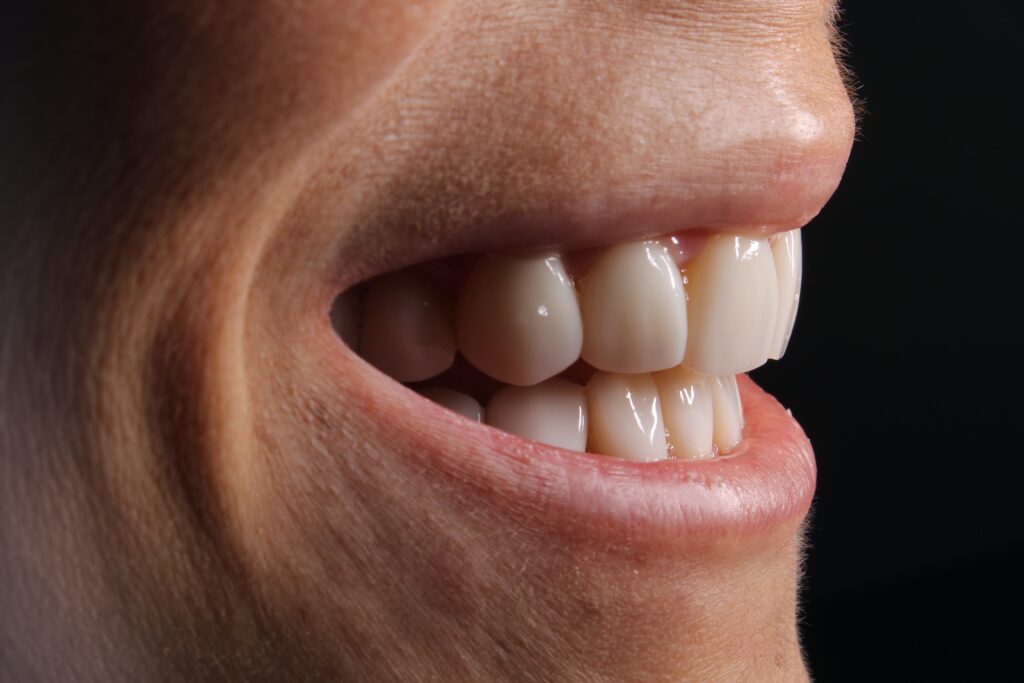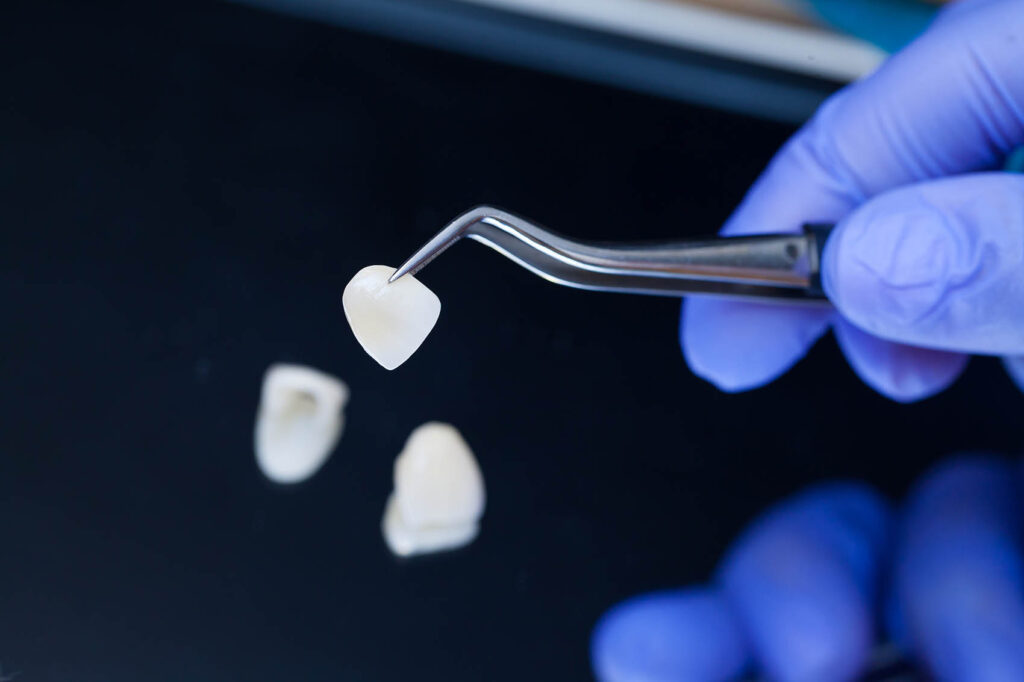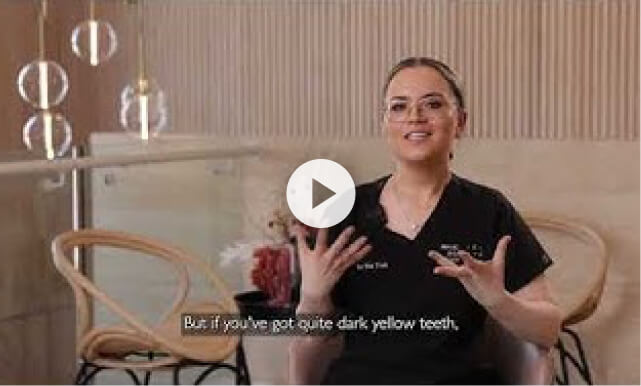The world of cosmetic dentistry is full of misconceptions, and one of the most common concerns most patients share is their teeth being excessively shaved or reduced for veneers. It’s an understandable worry, bringing up images of drastically reduced teeth that can’t be reversed. However, this couldn’t be further from the truth. We’ll delve deep into the art and science of tooth preparation for veneers, addressing concerns, debunking myths, and shining a light on the conservative approaches that are used when it comes to veneer placement.
Understanding Tooth Preparation for Veneers
Tooth preparation for veneers is a foundational step, ensuring that the final veneer fits seamlessly with the surrounding teeth. It’s about creating an ideal surface for the veneer to bond with.
No two teeth are the same, which means the preparation for each tooth will differ depending on factors such as the tooth’s position, size, and placement. Some teeth may require minimal adjustment, while others might need more extensive reshaping. The goal is always to remove the least amount of tooth structure necessary to achieve the desired result.
The Minimal Tooth Reduction Approach
The primary goal of the minimal tooth reduction approach is preservation. By removing only a thin layer of the tooth’s surface, we ensure that the majority of the natural tooth remains intact.
Modern dentistry techniques and tools have made this even easier. Using state-of-the-art equipment, dentists can gently and accurately reshape the tooth with menial intervention.
Benefits of Minimal Reduction
- Enhanced Bonding: A minimally reduced tooth provides a strong and durable surface for the veneer to bond.
- Reduced Sensitivity: By preserving more of the natural tooth enamel, the chances of post-procedure sensitivity are significantly reduced.
- Reversibility: In some cases, if the reduction is minimal and no underlying dental issues arise, the process can be reversible.
Preserving Tooth Structure with Veneers
Once bonded, veneers act as a protective shield for the underlying tooth. They safeguard the tooth from things such as stains from food and drink, and potential wear from grinding or clenching. This protective quality ensures that the natural tooth remains unharmed.
For teeth that are chipped, cracked, or weakened due to decay or old fillings, veneers can provide added strength. By covering the compromised areas, veneers reinforce the tooth structure, preventing further damage.
With proper care and maintenance, porcelain veneers can last for many years. This longevity means that once veneers are placed, the need for further dental procedures on the veneered teeth is often reduced, ensuring that the natural tooth remains undisturbed for longer.
Customised Tooth Reduction
When it comes to preparing teeth for veneers, customisation is key. At Dental + Skin Clinic, we place emphasis on tailored tooth reduction, ensuring we meet the specific needs of the patient.
Tooth reduction for veneers requires an expert eye, a steady hand, and an in-depth understanding of the patient’s dental structure. Our dentists take into account various factors, such as the tooth’s size, position and the desired outcome of the veneer placement, to determine the extent and approach to reduction.
Factors Influencing Customisation
- Tooth Position: Teeth that are more forward in the mouth may require a different approach to reduction compared to those that are set back.
- Desired Aesthetic Outcome: The envisioned end result plays a significant role in guiding the reduction process.
- Existing Dental Issues: Teeth with prior fillings, decay, or damage may need a specific approach to ensure both the health and aesthetics of the final result.
Using state-of-the-art tools and techniques, our dentists ensure that only the necessary amount of tooth structure is removed. The aim is always to achieve the desired result while preserving as much of the natural tooth as possible.
Exploring Conservative Veneer Placement
Conservative veneer placement revolves around the idea that ‘less is more’. It aims to achieve the desired aesthetic results with the least amount of tooth alteration.
The Advantages of a Conservative Approach
- Preservation of Tooth Enamel: The enamel is the hardest part of the tooth and offers protection against decay and sensitivity.
- Reduced Sensitivity: With minimal tooth reduction, the chances of post-procedure sensitivity are reduced.
- Flexibility for Future Treatments: A conservatively placed veneer allows for greater flexibility should future dental treatments be required, as more of the natural tooth remains intact.
Assessing Tooth Enamel and Veneer Thickness
When considering veneers, there’s a delicate balance between the thickness of the natural tooth enamel and the veneer. This balance is important for the overall health and functionality of the tooth.
The thickness of the veneer directly impacts the amount of tooth enamel that needs to be removed. Modern veneers can be incredibly thin, sometimes as slender as a contact lens, allowing for minimal tooth reduction. However, the desired aesthetic outcome, the natural colour of the tooth, and any imperfections being addressed can influence the veneer thickness.
Striking the Right Balance
- Aesthetics: A too-thick veneer can appear bulky or unnatural, while one that’s too thin might not effectively cover tooth discolourations or imperfections.
- Functionality: It’s essential to ensure that the veneer doesn’t interfere with the bite or the alignment of the teeth.
- Durability: The balance between enamel and veneer thickness also impacts how long the veneer lasts.
Balancing Preservation and Aesthetics
Veneers serve a dual role: to enhance the appearance of the teeth and to protect and preserve the underlying tooth structure.
Every individual comes to us with a unique vision for their smile. Some seek subtle enhancements, while others desire a more dramatic transformation. Understanding this vision is the first step. Our dentists engage in detailed discussions, using digital imaging and mock-ups to visualise the potential outcome and set clear expectations.
While working towards the aesthetic vision, the health and integrity of the natural tooth remain at the forefront. Techniques such as minimal tooth reduction and conservative veneer placement are used to ensure that as much of the natural tooth structure is retained as possible.
Discussing Tooth Reduction with Your Dentist
Starting on your journey to a transformed smile with veneers is exciting. However, it’s natural to have questions and concerns, especially regarding the process of tooth reduction. Open communication with your dentist is important in addressing these concerns and setting clear expectations.
Key Topics to Address
- Extent of Reduction: Understanding how much of the tooth will be reduced and why it’s necessary is important. Your dentist can provide insights into the tailored approach they’ll adopt for your unique dental anatomy.
- Techniques Employed: It helps to understand the techniques and tools that will be used for tooth reduction, so you can be involved in the decision-making process.
- Post-Procedure Sensitivity: Some patients may experience sensitivity post-reduction. Discussing preventive and management measures can help.
At Dental + Skin Clinic, we often use visual aids, such as digital imaging and mock-ups, to demonstrate the expected outcome post-reduction. This visual representation gives all our patients a thorough understanding of the process involved and the results they can expect at the end.
Book a Veneers Consult
Heading down the path to a radiant smile is a decision that can transform not just your appearance, but also your confidence and overall well-being. If you’ve been considering veneers, the first and most important step is to book a consultation with a trusted dentist to discover the transformative effects of veneers. At Dental + Skin Clinic, we invite you to join us for a comprehensive veneers consult, where we can guide you with our expertise.



